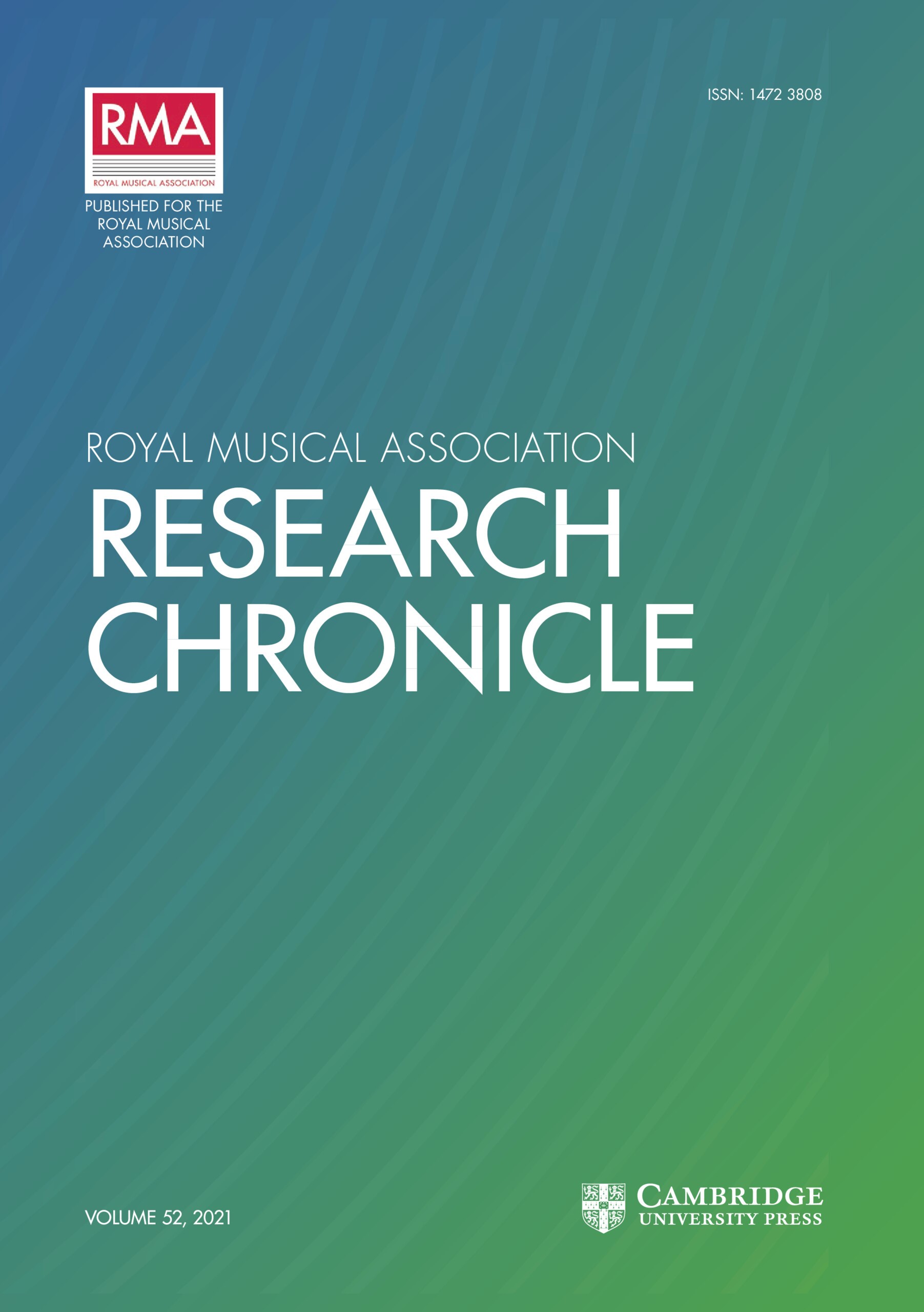No CrossRef data available.
Article contents
The Origins and Contents of the Magdalene College Partbooks
Published online by Cambridge University Press: 01 January 2020
Extract
In March 1916 a short entry in the magazine of Magdalene College Cambridge announced the discovery of ‘a set of five manuscript part books containing English instrumental music of the late seventeenth century’. These had been held in the Old Library of the college and their origin was something of a mystery; for there was no other holding of the library with which they could positively be linked. They were deposited by the Master of the college in the Fitzwilliam Museum where they remained until they were returned to the Old Library in 1969. In 1974 Dr Richard Luckett was asked to catalogue some loose sheet music which was thought to belong to the Pepys Library. It soon became clear to him that the printed music in question could not have been part of Pepys' collection, since the majority of the pieces dated from, and had been printed well after, Pepys' death in 1703, when the library had been closed. However, like the set of manuscript partbooks, this music could not at that time be connected to other music or books belonging to the college.
- Type
- Articles
- Information
- Copyright
- Copyright © Royal Musical Association, 1996
References
1 Magdalene College Magazine (March 1916), 55–6.Google Scholar
2 See Hawkins, SirJohn, A General History of the Science and Practice of Music, 2 vols. (repr. New York, 1963), ii, 826. For a more detailed biography, see Gustafson, Bruce, French Harpsichord Music of the Seventeenth Century: A Thematic Catalog of the Sources with Commentary, 3 vols. (Ann Arbor, 1977—9), i, 68–70.Google Scholar
3 Darmstadt, Hessische Landes- und Hochschulbibliothek Mus MS 1227.Google Scholar
4 London, British Library Add. MS 39, 659 and Oxford, Bodleian Library Tenbury MS 1508. Gustafson gives inventories of these manuscripts in French Harpsichord Music of the Seventeenth Century, ii 74–221; Lbl Add. MS 39, 659 has also been reproduced in facsimile; see p. 57 below.Google Scholar
5 Chicago, Newberry Library MS VM 350 Bl 13t (Bass part missing); a set of three part books owned by Bruce Gustafson and formerly in the possession of W. H. Cummings; and a set belonging to Christopher Hogwood, of which only the first treble partbook survives. The other known manuscripts in Babel's hand are as follows: Rochester University, Sibley Music Library Vault M1490 B113 (recently discovered by Peter Holman), containing music for one and two recorders; Paris, Bibliothèque Nationale MS Rés. Vma MS 967 and Oxford, Bodleian Library MS Mus. Sch. E. 393, both containing Italian songs with unfigured bass; and a full score of Bononcini's La Camilla Triomfante in the Powell Collection, University College of Wales, Aberystwyth. I am grateful to Bruce Gustafson for allowing me to include in this list manuscripts he himself has identified as being in Babel's hand.Google Scholar
6 Durham Cathedral C 53i and 53ii; see inventory in Bruce Gustafson, ‘The Legacy of Instrumental Music of Charles Babel, Prolific Transcriber of Lully's Music’, Jean-Baptiste Lully: Actes du Colloque / Kongreβbericht, Neue Heidelberger Studien zur Musikwissenschaft 18 (Laaber, 1990), 495–516.Google Scholar
7 See Dart, Thurston, “The Cibell', Revue Belge de Musicologie, 6/1 (1952), 25. Dart also gives details of other connected pieces.CrossRefGoogle Scholar
8 The sources for Example lc are Cfm Mu MS 119, LAuc Finney partbooks, Lam MS XXXIVB, Lbl Add. MS 5338, Lbl Add. MS 31447, Lcm MS 1144, Ooc MS UA 35, Pc MS Rés F.202, and Ob Tenbury MS 338 (see below for manuscript abbreviations).Google Scholar
9 In the revised Purcell Society edition, Margaret Laurie collates the Magdalene partbooks version of the piece with the sources for the chorus, and places the Ayres for the Theatre version in an Appendix, suggesting that it ‘may be used for a dance at this point’. See Margaret Laurie ed., King Arthur, The Works of Henry Purcell xxvi (London, 1971), 78–9, 165, 186 and 204.Google Scholar
10 The movements marked for hautboys are as follows: IV/10, IV/15, V/15, VII/15, IX/10, XI/11, XII/3 (second half only), XVIII/15, XXVI/5, and XXXI/10.Google Scholar
11 See, for instance, Richard Charteris, ‘Some Manuscript Discoveries of Henry Purcell and his Contemporaries in the Newberry Library, Chicago’, Notes, 37 (1980) 7–13; Robert Klakowich, ‘Harpsichord Music by Purcell and Clarke in Los Angeles’, The Journal of Musicology, 4/2 (1985–6) 171–90; and Peter Holman, ‘A New Source of Restoration Keyboard Music’, Royal Musical Association Research Chronicle, 20 (1986–7) 53–7.Google Scholar
12 T numbers refer to catalogue entries in Thomas F. Taylor, Thematic Catalog of the Works of Jeremiah Clarke, Detroit Studies in Music Bibliography 35 (Detroit, 1977); LWV numbers refer to catalogue entries in Herbert Schneider, Chronologisch-thematisches Verzeichnis sämtlicher Werke von Jean-Baptiste Lully, Mainzer Studien zur Musikwissenschaft 14 (Tutzing, 1981); Z numbers refer to catalogue entries in Franklin B. Zimmerman, Henry Purcell, 1659–1695: An Analytical Catalogue of his Music (London, 1963).Google Scholar
13 See Holman, Peter, ‘A New Source of Restoration Keyboard Music’, 54, for a comment about the connections between this movement, the visit of Czar Peter the Great to England in 1698, and the dating of The Italian Husband.Google Scholar
14 See William C. Smith, A Bibliography of the Musical Works Published by John Walsh during the Years 1695–1720, 2 vols. (London, 1948).Google Scholar
15 See Françios Lesure, Bibliographie des Editions Musicales publiées par Estienne Roger et Michel-Charles le Cène (Amsterdam, 1696–1743) (Paris, 1969), 86.Google Scholar


